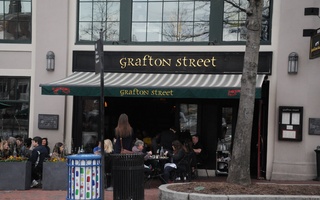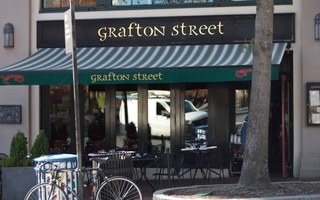At Harvard, we’ve encountered countless programs, activities, and events designed to improve the student experience. Most of these programs involve food in some form or another. From berry-themed study breaks to brain break, it’s clear that the way to a Harvard student’s heart is through their stomach. With this in mind, we appreciate the opportunity that the College’s successful Classroom to Table program has given us, allowing us to meet professors in an intimate, comfortable, and delicious setting. We commend the College for establishing the program, as it has been a sterling success in getting undergraduates to engage with professors in a meaningful way, paving the way for solid, lasting relationships.
With its skyrocketing popularity, it is no surprise the initiative has recently seen budget constraints—as it is, the program reached its funding limit this past week and as a result closed its reservation form well before the end of the term. While it is unfortunate that the program ended early, this course of action demonstrates that it is generally difficult to find and keep track of funding for the Classroom to Table program. Therefore, in order to prevent a similar mid-semester shutdown in the future, we support the new restrictions the program has instituted capping the number of meals each student can have to two per term instead of four. We further support the continued implementation of the $30 spending limit per student at every Classroom to Table meal. Every student ought to have to opportunity to have a meal with a professor in the setting that Classroom to Table provides, and the funds garnered from these particular restrictions are entirely necessary to foster this equity.
Budget cuts and added limitations, however, cannot resolve the entirety of the Classroom to Table program’s financial woes. Indeed, the program is in need of more new funding. Fortunately, many groups around the College have the resources to take action to aid this valuable and necessary program. For example, the Undergraduate Council could consider providing funds to bolster the program. It is true that the Council has undertaken similar initiatives to Classroom to Table specifically in order to address the “barriers” that exist in the program, such as students themselves having to schedule outings themselves instead of having pre-set dinners to choose from. Nevertheless, helping to defray some of the Classroom to Table program’s costs would go a long way to provide students who prefer a dining program that offers more agency and free choice than the UC’s with a viable alternative. We thus hope the Council considers this course of action in future.
Overall, we find Classroom to Table to be a wonderful Harvard tradition, and we would be disheartened if financial reasons caused the College to end it entirely. Thus, we support the recent addition of restrictions with the hope that in the long term, the program is able to find new sources and continue to enrich our minds and our stomachs.
This staff editorial solely represents the majority view of The Crimson Editorial Board. It is the product of discussions at regular Editorial Board meetings. In order to ensure the impartiality of our journalism, Crimson editors who choose to opine and vote at these meetings are not involved in the reporting of articles on similar topics.
Read more in Opinion
'Modern Love' in Case StudiesRecommended Articles
-
Hundreds Dine on Harvard’s Dime with Classroom to Table ProgramJust under 1,000 Classroom to Table meetings were arranged during the 2015-2016 academic year, according to Associate Dean of Undergraduate Education Noel Bisson.
-
 Classroom to Table Program Halts for Semester After Reaching Budget Limit
Classroom to Table Program Halts for Semester After Reaching Budget Limit -
 ‘Classroom to Table’ Program Returns for a Third Year
‘Classroom to Table’ Program Returns for a Third Year -
 Restaurants Notice Boost With Classroom to Table Revival
Restaurants Notice Boost With Classroom to Table Revival -
 Classroom to Table Shuts Down After Reaching Funding Limit
Classroom to Table Shuts Down After Reaching Funding Limit













